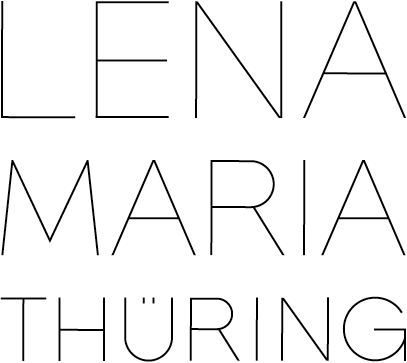Meine Hand ist sieben /
2014
HD Video, single channel, 16:9, colour, sound,
20 min 38 sec, German, English subtitles
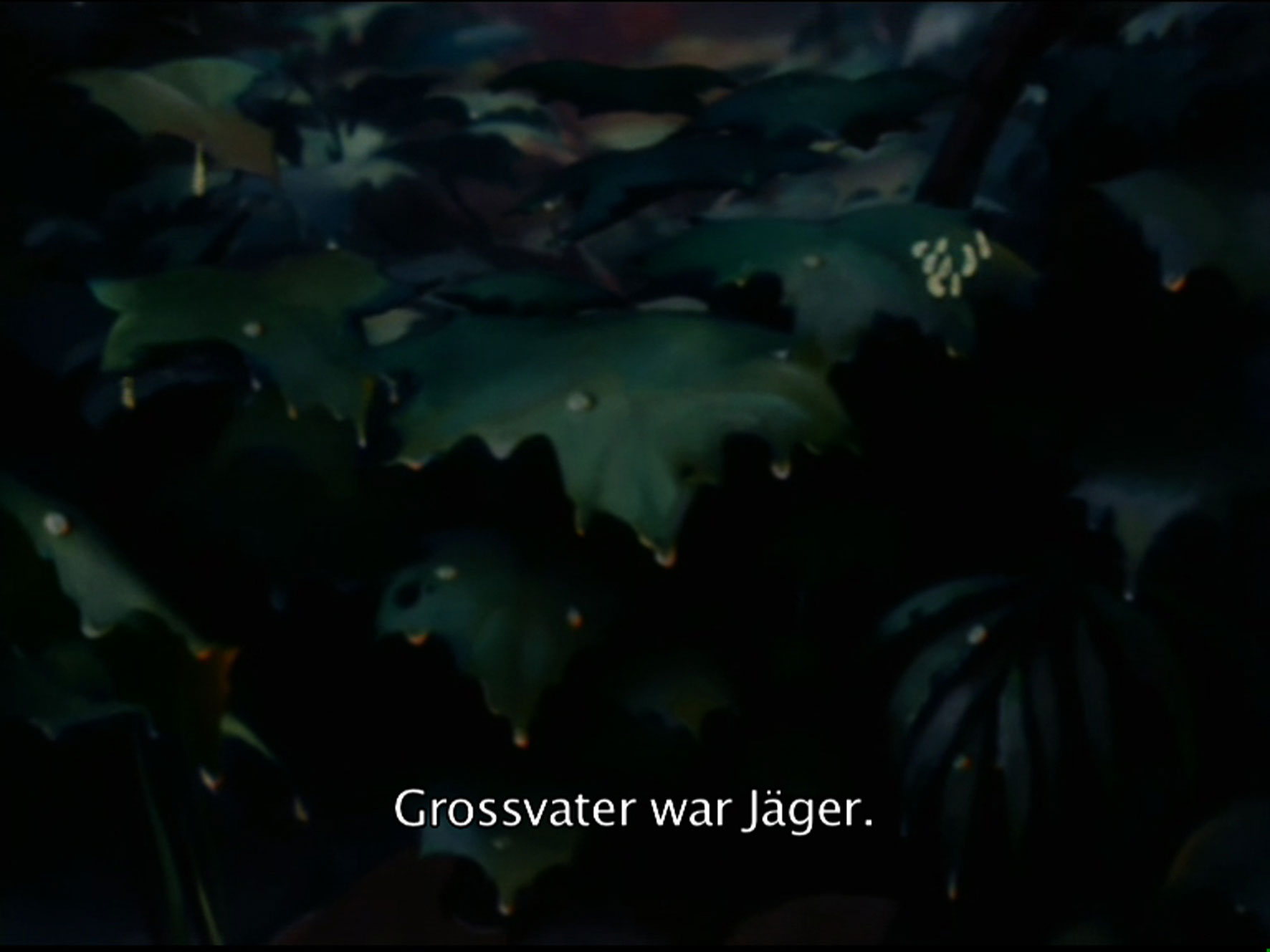
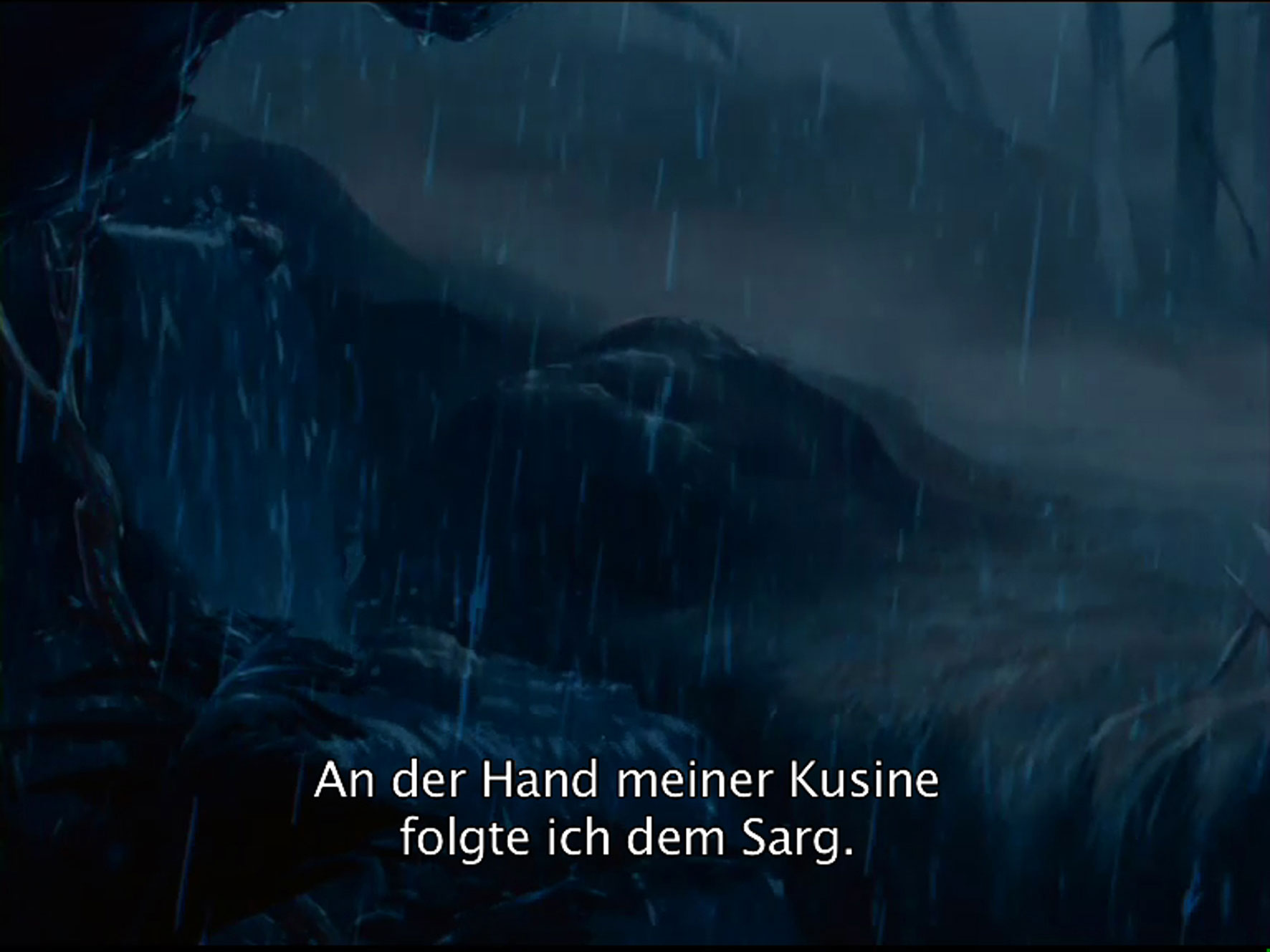
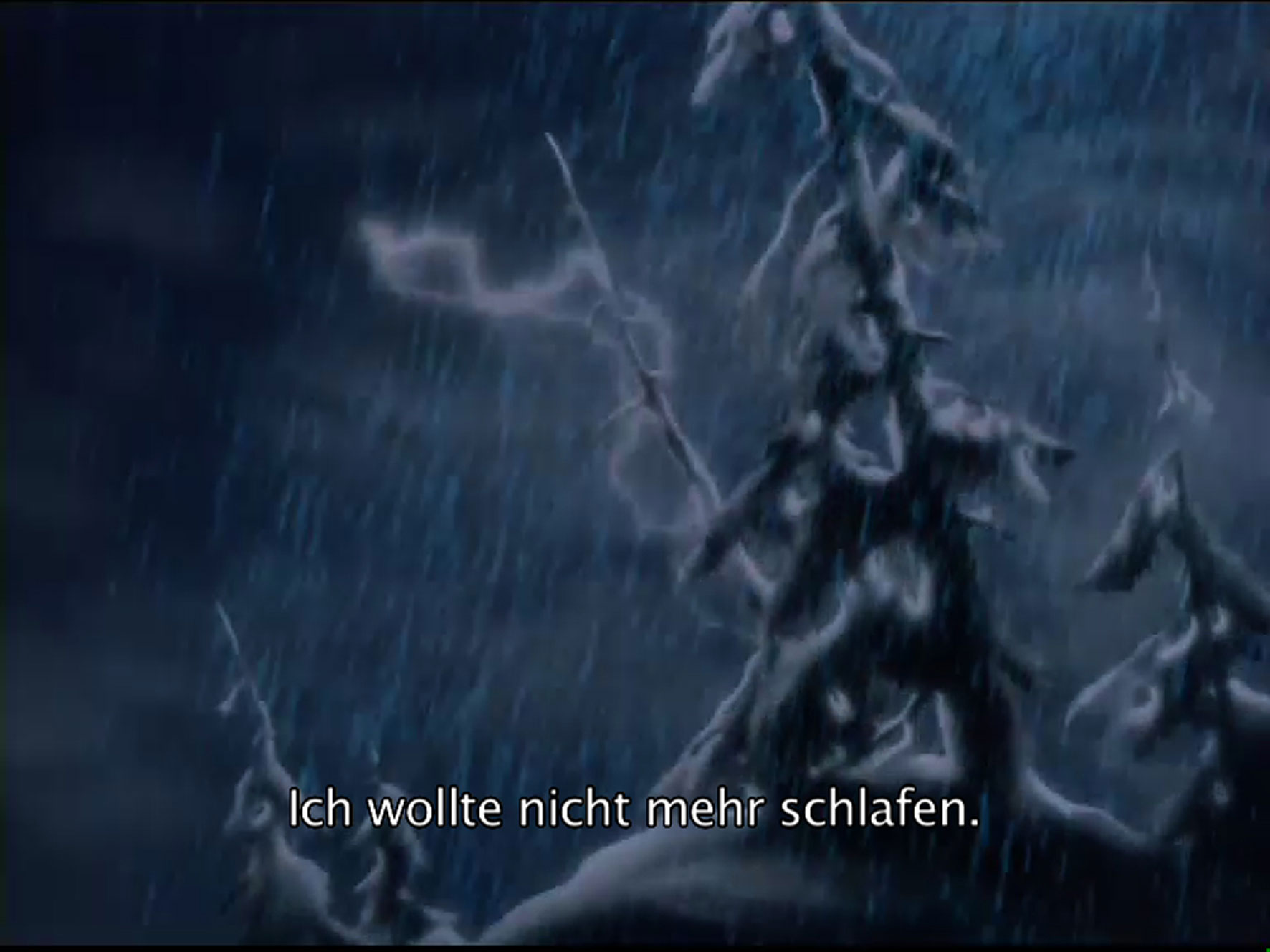
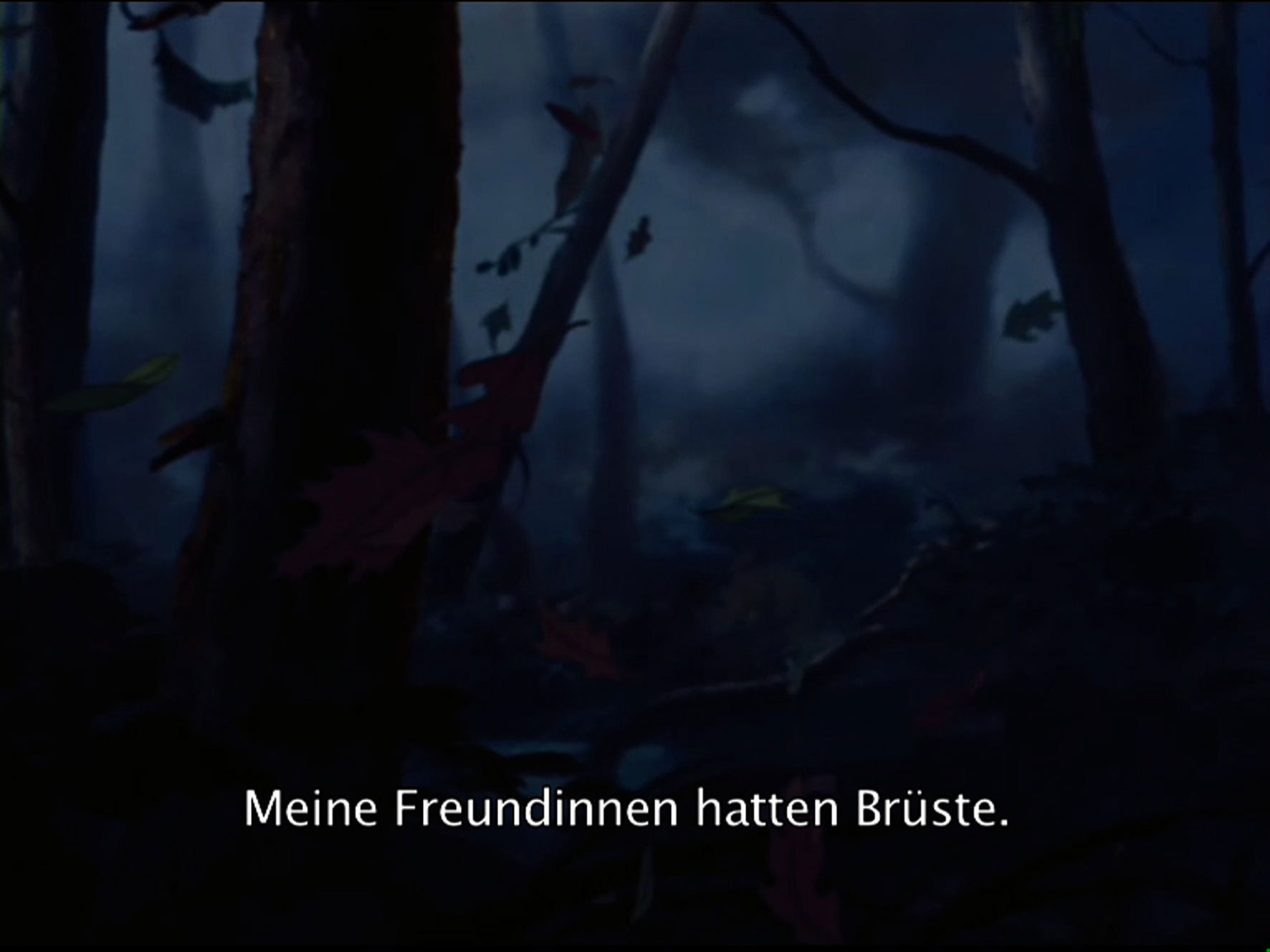
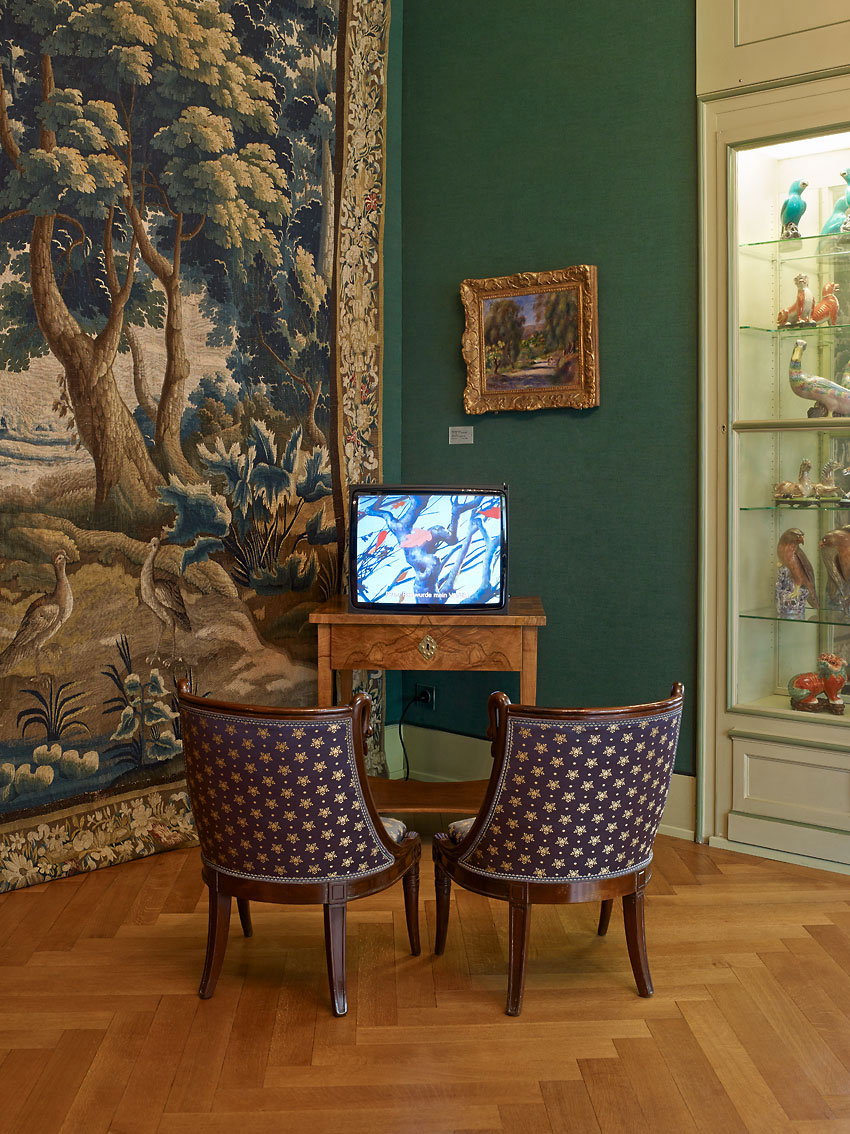
Text
EN /
DE
MEINE HAND IST SIEBEN / 2014
HD Video, single channel, 16:9, colour, sound,
20 min 38 sec, German, English subtitles
Although Lena Maria Thüring’s art explores social and cultural themes, her works often grow out of her engagement with biographical narratives or personal stories. The point of departure for her most recent video, “Meine Hand ist sieben” (2014), is the story of a girl who was so traumatized by her grandfather’s death that she decided to stop growing. As landscapes from the classic animated movie “Bambi” fill the screen, the plot is narrated in short and laconic sentences in the subtitle line. On the soundtrack, dramatic music and fragments of dialogue from popular animated children’s movies respond to elements of the narrative—but they do so in the characteristically euphemistic style steeped in stereotypical ideas about gender of a Disney production, in a jarring mismatch with the matter-of-factly tone of the “subtitles.”The film thus draws a contrast between the individual child’s fear of growing up and death and the high pathos of the American (animated) movie industry’s attempts to explain the world to its young viewers. Its “fairy tales” have a lasting impact on the minds of children, for whom reality and fiction are inextricably interwoven.
Nadia Schneider Willen, Museum Langmatt, Baden, Switzerland
MEINE HAND IST SIEBEN/ 2014
HD Video, single channel, 16:9, colour, sound,
20 min 38 sec, German, English subtitles
Lena Maria Thüring setzt sich mit soziokulturellen Themen auseinander, geht dabei aber oft von persönlichen Biografien oder Geschichten aus. Ausgangspunkt ihrer neusten Videoarbeit, “Meine Hand ist sieben” (2014), ist die Geschichte eines Mädchens, das traumatisiert vom Tod des Grossvaters,nicht mehr wachsen wollte. Während auf der visuellen Ebene Landschaftsbilder aus dem Trickfilm-Klassiker “Bambi” zu sehen sind, wird die eigentliche Handlung in kurzen, nüchternen Sätzen in der Untertitelzeile erzählt. Dramatische Musik und Dialogfragmente aus bekannten Kindertrickfilmen greifen auf der Audioebene inhaltliche Elemente der Erzählung auf. Sie tun dies aber auf eine Disney‘sche, euphemistische und von Geschlechterstereotypen durchsetzte Art, die im Kontrast zu den sachlichen “Untertiteln” steht. Die individuelle, kindliche Angst vor dem Erwachsenwerden und dem Tod wird hier den pathetischen Welterklärungsversuchen der amerikanischen (Trick-) Filmindustrie gegenüber gestellt, welche die kindlichen Gemüter, für die Realität und Fiktion ineinander verflochten sind, mit ihren “Märchen” nachhaltig prägen.
Nadia Schneider Willen, Museum Langmatt, Baden, Schweiz
